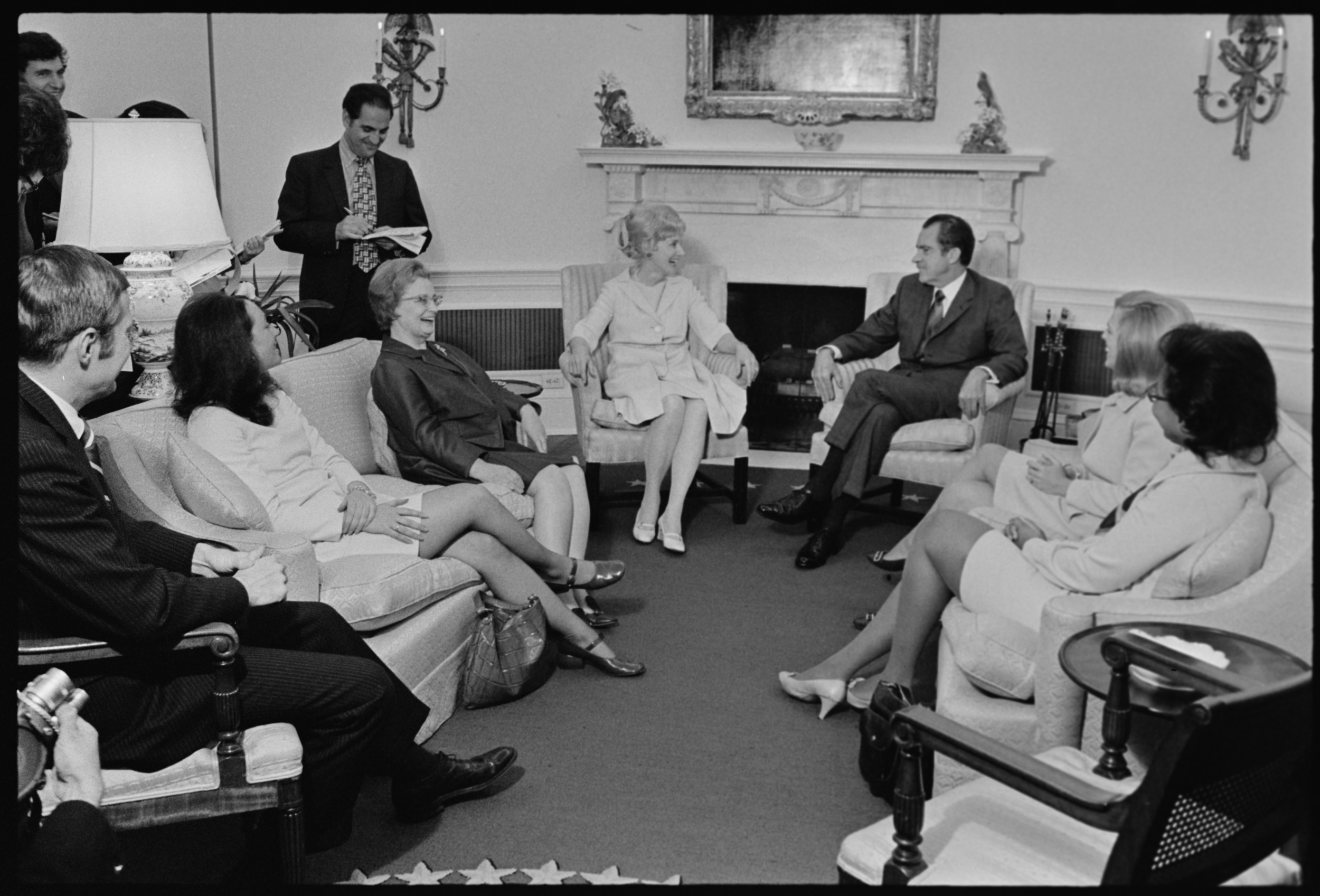
Historically speaking, women have been consigned to the confines of the private, domestic sphere; tradition dictates that women are the homemaker, the caregiver, and the mother. However, how has this tradition been reconciled with the trend of women moving into the workplace? This was an issue that Barbara Franklin and her colleagues grappled with during their attempt to recruit women for high-level positions in the federal government.
In response to a letter to one Mrs. George T. Paulk, Barbara Franklin wrote that there she had two personal concerns in the execution of the recruitment program. Franklin wrote, “How do we motivate the private sector to identify and promote women? How do we give ‘credit’ within the system to the woman who takes a few years off to raise children and participate in volunteer activities? Our culture claims motherhood is a woman’s most important function—yet, in the outside world, we penalize her for fulfilling that role at home.” This marks an important distinction in the attitudes taken within the Nixon Administration, and really in the American public in general, on the role of women in the home and in the workplace.
This perception slowly began to change, picking up significant pace in postwar America and culminating in the 1960s with the women’s liberation movement. Noticing this shift, the Nixon Administration adopted a “freedom of choice” attitude towards women’s employment. This would form an integral part of their recruitment program.
In a memo to special assistant to the President on personnel, Fred Malek, Franklin writes, “We need to hit both sides of the issue: (1) the need for equal employment opportunity so that women may develop their talents, and (2) the understanding of the dignity and importance of those who choose a mother/homemaker role. The two must be articulated, balanced, and woven together with extreme sensitivity and subtlety.” In order to assure that women are free to work where they would like, given they are qualified for such work, women must also be free to work in the home without being punished for so choosing. Rather than asserting that one choice is superior to the other, Franklin stressed that the equal employment for women be woven with traditional ideas of femininity and motherhood.
This idea that women should have the freedom to choose where they work and what they do was an important step forward in the Nixon Administration. Support of the Equal Rights Amendment (ERA) was part of the Administration’s public support for the advancement of women, not only in the federal government but in life in general. An ERA had been floating around almost since the enfranchisement of women in 1920, and was often called the Anthony Amendment, in honor of suffragist Susan B. Anthony. The ERA would provide that “‘equality of rights under the law shall not be denied or abridged by the United States or by any State on account of sex.’” In a memo from Malek to John Ehrlichman, Malek acknowledges that the Nixon Administration’s “current position appears to reflect a lack of interest and attention rather than a clear strategy,” and that this could pose a significant challenge to the recruitment of more women to high-level positions in government. Malek continues to point out that the Administration’s wishy-washy position on the ERA threatened their credibility. In order to counteract this, Malek suggests that the President and the Administration take a visible positive stance on the Amendment, thereby bolstering the recruitment process. and building support among women voters.
Ultimately, support for the ERA went hand in hand with the Nixon Administration’s program to recruit women for government positions. Malek argues “by maintaining our ambiguous-to-negative posture, we risk incurring for the President the hostility of a sizeable segment of women voters in 1972.”Though an issue with significant political implication, the Nixon Administration’s budding support of equal rights for women and greater representation in the federal government were vital steps forward for the women’s movement into the workplace.

